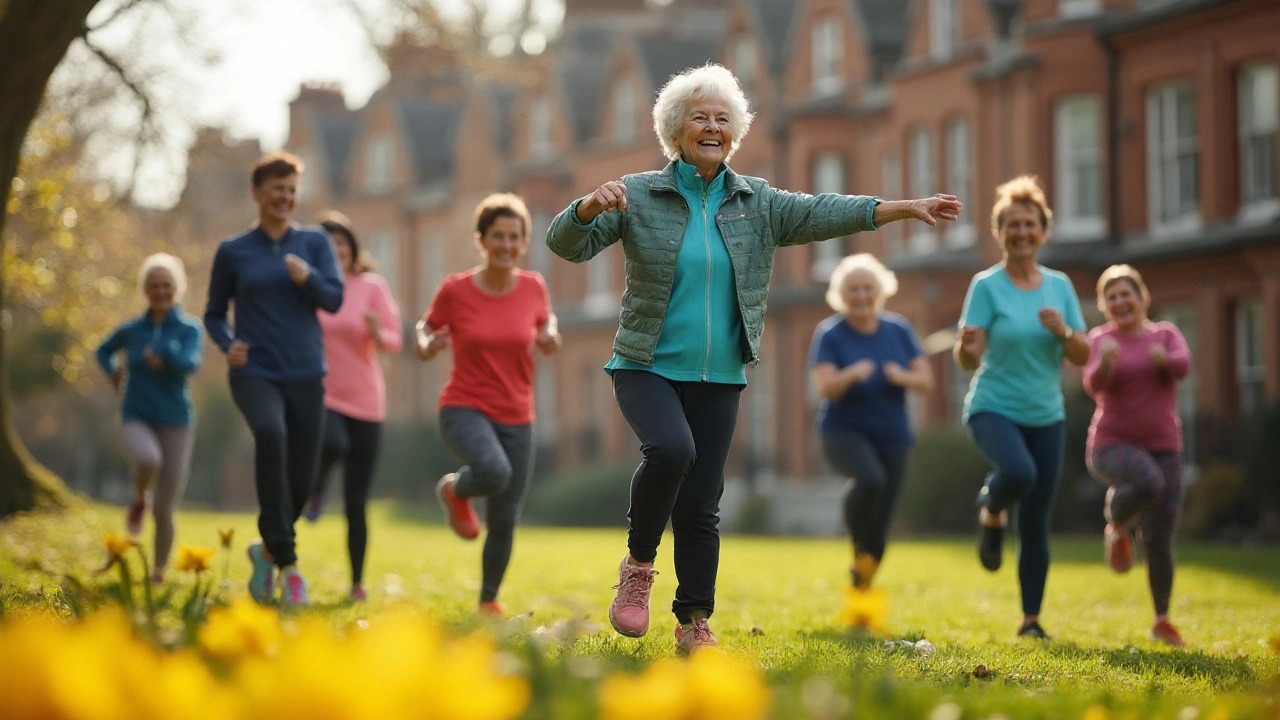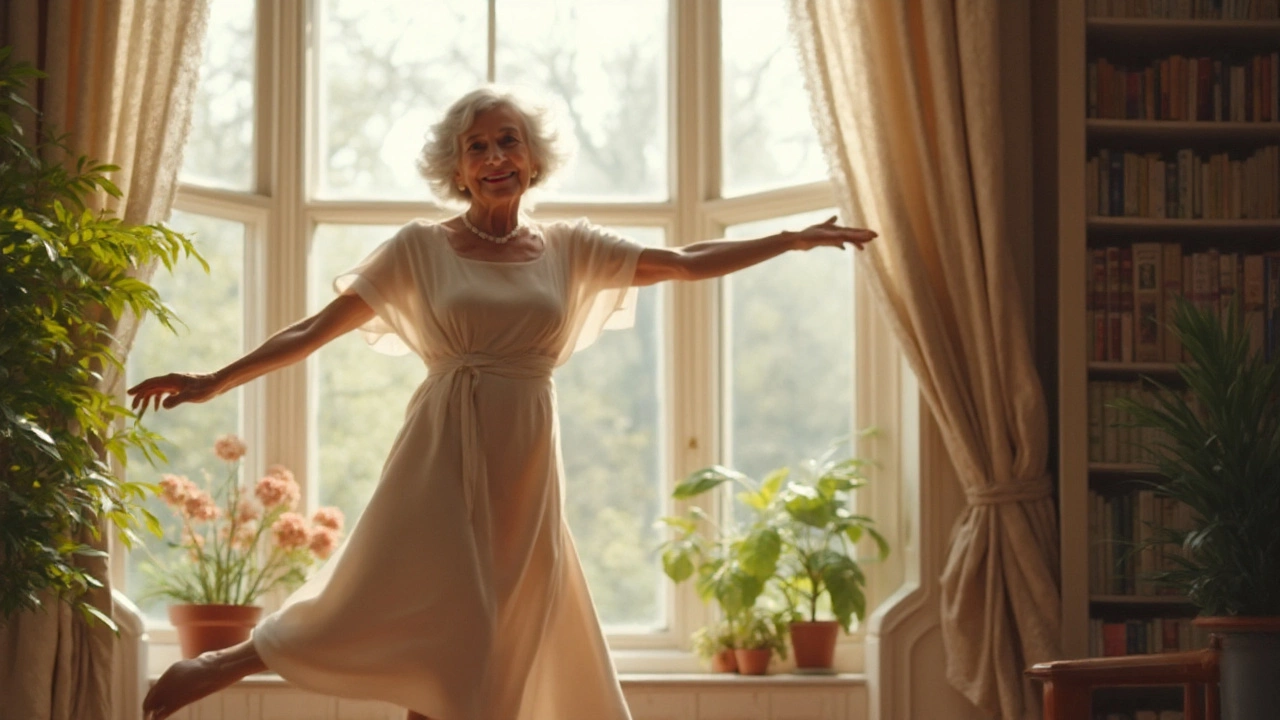
You probably know someone whose entire life changed after a simple trip or stumble. Falls are one of those sneaky threats, especially as we get older. And while the world throws out all sorts of fancy gadgets and tricky routines, there's a clear answer to the big question: what's the number one balance exercise that actually helps seniors?
It almost feels unfair. One moment you’re running for the bus, next thing you know, you're hesitating at curbs. Our sense of balance can fade with age—here’s why. Muscles shrink, joints stiffen, reflexes slow down, and sometimes even the inner ear starts lying to us. The real kicker? Vision changes and even some common meds make it worse.
In Australia, falls are the leading cause of injury among older adults. The Australian Institute of Health and Welfare reported over 132,000 hospitalisations due to falls in people aged 65+ last year alone. Out of those, more than half took place right at home—in the lounge or while doing something as ordinary as putting on socks.
Staying on your feet is about more than pride. A bad fall can lead to broken hips, lengthy recoveries, or a fast ticket to losing independence. And let's be honest, nobody wants to swap beach days or walking with mates for hospital food and check-ups. When you improve your balance, every part of life feels steadier. You move with confidence through the markets, play with grandkids, or just bend down to tie a shoelace without gripping a chair for dear life.
This is why doctors and physios are always banging on about balance training. They’re not just hyping some passing trend. There’s solid, consistent evidence that the right balance exercises don’t just make you less wobbly—they can cut your fall risk in half. According to a 2022 study in the Journal of Aging and Physical Activity, seniors who followed a structured balance program had 43% fewer falls than those who just stuck to walking or regular gym routines. Clearly, not all exercise is created equal for this job.
Out of all the fancy moves, balance toys, and classes, the humble single-leg stand takes the cake. It's cheap (free, really), works everywhere—on your verandah, kitchen, backyard—and you don’t need anything but yourself and a steady chair near you the first few tries.
Here’s why it works so well: The single-leg stand hits every weak link in the stability chain. When you lift one foot off the floor, your ankle, knee, hip, and core fire up to keep you upright, while your brain and eyes figure out how to keep things steady. At the same time, you’re gently building strength through your lower body—right where most falls start.
But don’t just take my word for it. Queensland-based physiotherapist Rachel Ling told me she starts nearly every older client with this. “It’s the simplest balance test and the strongest builder,” she says. The evidence backs her up. A massive meta-analysis in 2022 rounded up 48 studies on senior balance and found the single-leg stand increased both static and dynamic balance across all age groups over 60, no exceptions.
Here’s exactly how to do it:
If you want to step it up, try closing your eyes or turning your head side to side. Both tricks teach your body to trust itself, not just your vision. And always work in a safe spot with something sturdy nearby—nobody wants their ‘improvement’ to send them crashing!
Some people benefit from wearing sneakers with a grippy sole or practicing barefoot on carpet. Flat surfaces work best. If your balance is already shaky, consider holding onto your kitchen counter at first. You don’t have to force progress; little gains add up fast.

People love options, and the fitness industry offers plenty: tai chi, yoga, BOSU balls, and wobble boards make big promises. But when researchers compare them head to head, the single-leg stand often wins for pure simplicity and everyday usefulness.
Tai chi is a close second, especially when blended into weekly routines. It’s been shown to improve dynamic balance, reduce falls, and boost confidence. However, tai chi classes aren’t everyone’s cup of tea—or always easy to access outside the city. Yoga is also excellent, thanks to all the poses where you’re pushing, pulling, or standing on one foot. But some people get put off by the need for classes, mats, or a room full of flexible types. With the single-leg stand, you need nothing but yourself and a few minutes a day.
Even if you’ve heard about standing on foam pads, using balance discs, or playing with high-tech apps, those can overwhelm or break the bank. The single-leg stand remains the gold standard in physiotherapy clinics because it builds everyday balance. Think about it: lots of daily tasks—walking up stairs, reaching into the fridge, even changing pants—all need you to shift weight and briefly balance on one foot. That’s exactly what this exercise trains.
There’s also a strong link between consistent single-leg standing and longer life. In 2022, a Brazilian study followed adults aged 51–75 and found that those who could hold the single-leg stance for over 10 seconds were four times less likely to die over the next seven years than those who couldn't. It literally adds years.
Still, no exercise has to live alone. If you like variety, throw in some sideways walking along a hallway, heel-toe walking, or gentle squats. Supercharge results with a few minutes of single-leg balance daily—you’ll notice stronger legs, steadier steps, and maybe even tighter jeans.
Consistency is your best friend here. Aim for five or six days a week, but don’t panic if you miss one. Little bits every day work better than exhausting yourself with an epic weekend workout. Making it a routine—try linking it to brushing your teeth or waiting for the kettle to boil—helps it stick.
If the single-leg stand feels too tough or wobbly at first, scale it down. Keep one hand lightly on a countertop, focus on squeezing your core gently, and keep your eyes at eye-level. The less you grip, the more your body learns. Some seniors set a kitchen timer and try to outlast yesterday’s record—it's a sneaky way to build confidence.
Be patient with yourself. Progress isn’t always a straight line. Some days you’ll wobble more—if you’re tired, dehydrated, or haven’t eaten, balance can suffer. Daily ups and downs are normal. The trick is showing up anyway. Over a few weeks, you’ll notice your foot holds out longer, your hip feels stronger, and walking suddenly seems effortless.
Want to add a little challenge? Here are a few upgrades:
Safety first. Never push through pain—mild discomfort or muscle warmth is good, but sharp aches or feeling dizzy means it’s time to stop. If you have any medical condition, recent surgery, or take medicines that affect balance (like blood pressure meds), run it past your GP before starting a new balance routine.
Remember, there’s no gold medal for standing on one foot the longest. The real win is carrying groceries without fear, walking the coastal path without second thoughts, and reaching that top shelf without a tumble. The *balance exercise for seniors* really is that simple—and it really can change how you move through the world.